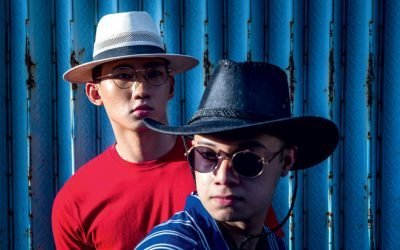Long before Liliw and Marikina became known as the leading footwear manufacturers in the Philippines, the sapatos (shoes/footwear) industry already thrived in Biñan. As a matter of fact, it is one of the oldest livelihoods that rightfully earned a symbol in the city’s official seal. Barangay Dela Paz specializes in women’s sandals, step-ins, and children’s shoes, while Barangay Malaban focuses on men’s shoes and more expensive women’s shoes. Barangay Casile specializes in the making of bakya or wooden clogs, while San Jose is another shoemaking barangay. They all contribute to Biñan’s renown as an established name in the shoemaking industry. The industry is deeply ingrained within the Biñanense footwear makers’ households as production is done right in their homes. During the industry’s peak in Biñan in the 1960s, there were 500 sapatos enterprises lodged in 3,000 households. It was a flourishing industry until globalization led to the increase of imported goods.
In a collective effort to bring back the glory days of the sapatos industry in Biñan, several schools and colleges, both public and private, partnered with local sapateros (shoemakers) in 2011. The agreement does not require the students to buy, but compels the schools to promote and encourage the use of Biñan’s products by sourcing locally made black leatherette shoes as part of their official school uniform. In addition, schools may even request to have their own design made. The initiative aids local sapateros to find a niche in their hometown. Partner educational institutions are confident that, although the Biñan-made shoes are much cheaper than the ones available in malls, the durability for which they are known has not been compromised.
Up to this day, each piece of sapatos is meticulously hand-made by Biñanense sapateros to ensure its strong and high quality with the comfort of the feet in mind. Among the biggest names in the industry in Biñan are the Almendrals. Their business traces back to the 1970s, but stopped its operation for four years when the mother fell ill. During these years, the patriarch, Isidro Almendral, would make shoes under others’ roof until he, together with his two sons, Jerry and Romy, took the risk to revive their business. After school, Romy would help make a pair until he mastered the craft. When he got a job right after college, he would bring some pairs with him to sell to his colleagues. In 1987, with grit in his core, he brought 14 pairs to Gaisano Metro – these are bakyas (wooden clogs) with a design inspired by bahay kubo (nipa hut). The initial risk he took led to a repeat order. A year later, with the same grit, he brought samples to Shoe Mart until he was able to close a deal with the big shopping mall.
Other brands that continued the shoemaking heritage are Ligaya’s Footwear and Leanza Kids Footwear, both owned by Marilou Dilag Almeda. Her mother, Ligaya Siguera Dilag from Tubigan, was a magrerebete, a woman who creates and sews the edges of the footwear. Ligaya worked in Dela Paz where she met Ernesto Dilag Sr., son of Basilio Dilag, a sapatos business owner from whom she learned the ins and outs of the industry. In the late 1970s, she took the risk of starting her own footwear production. Everyday at 3 o’clock in the morning, she would personally bring her wholesale sapatos products to the stall she shared with Ernesto’s second cousin in Baclaran. Baclaran is an established place for sourcing wholesale products, and it is an indicator that one’s business is burgeoning if it has a space in it. In 1988, however, she met a serious vehicular accident, and did not survive.
Ligaya’s eldest child Marilou took over the business, which continued to prosper and profit. Competition was healthy, beneficial even, among the Biñaneses themselves as they served as each other’s checks and balances. In the late 1990s, the Philippines became import-dependent, allowing the influx of mass-produced, beautifully designed but poorly made footwear imported from China. Nevertheless, Biñan’s sapateros are confident that their determination and artistry are more than enough to keep them afloat. The competition against foreign traders even drives them to continue innovating and to maintain the high quality of their sapatos. They are determined to fight for the industry that to them is not only an economic asset, but a heritage as well. Marilou recalls an old saying: “Kapag iyan ang ipinapakain sa iyo ng mga magulang mo, hanggang kaya mo pang ituloy ang hanapbuhay na ito, itutuloy mo.” (If that is the livelihood that your parents fed you with, you will, for as long as you can, continue to sustain it.)


